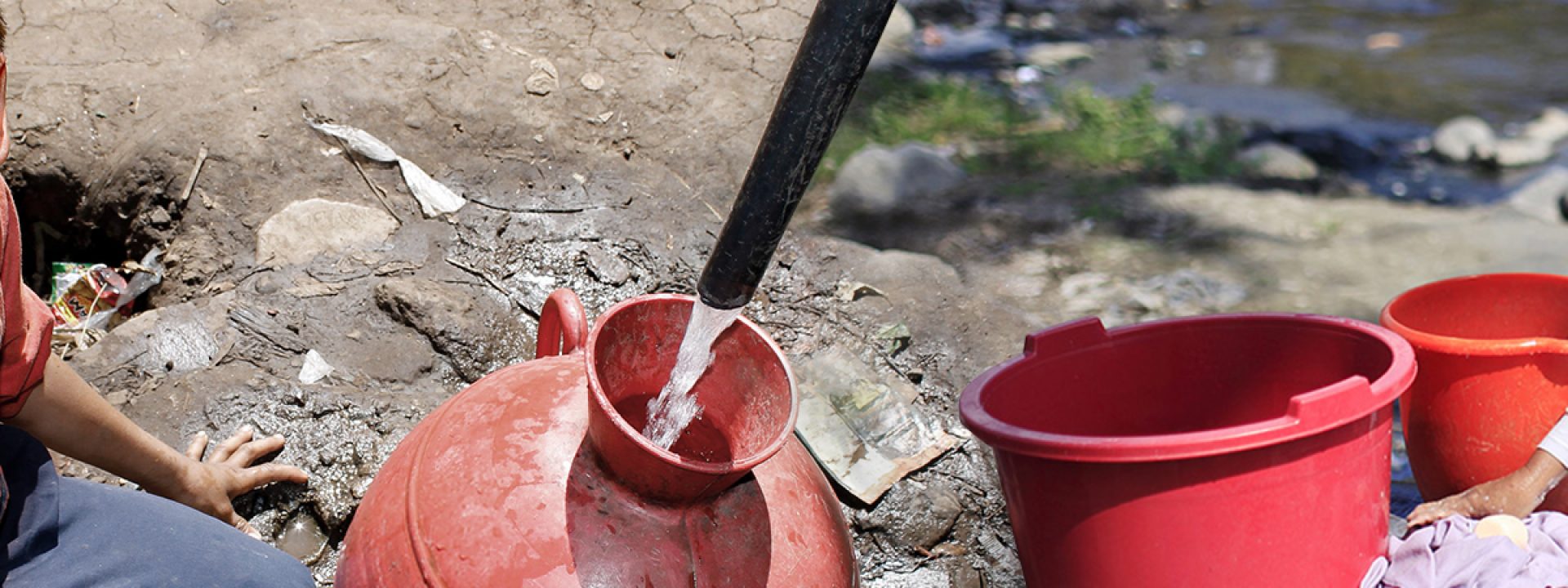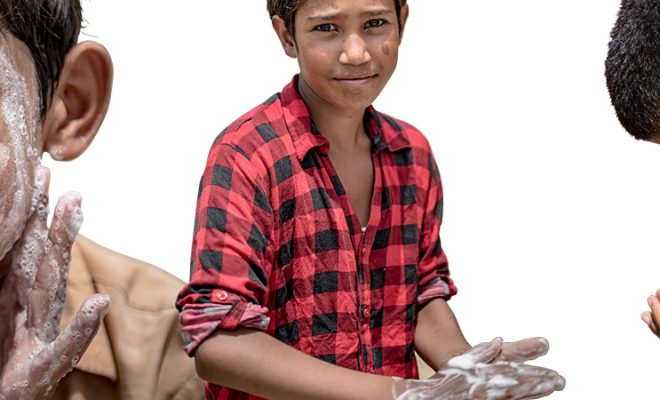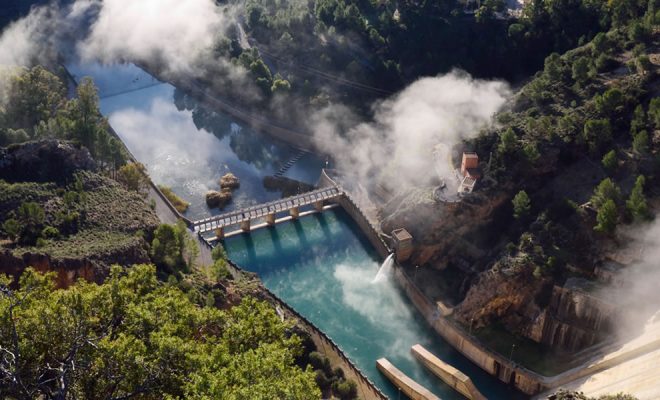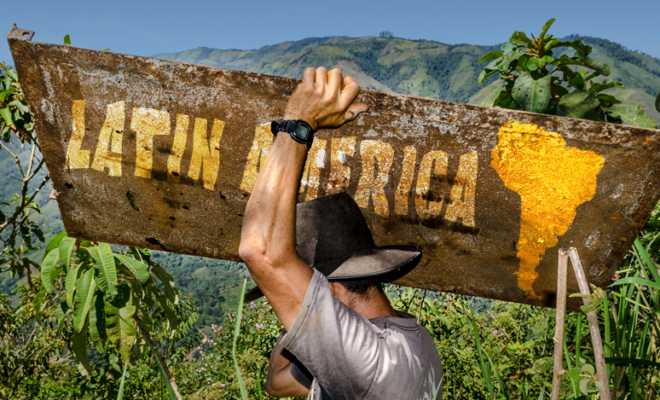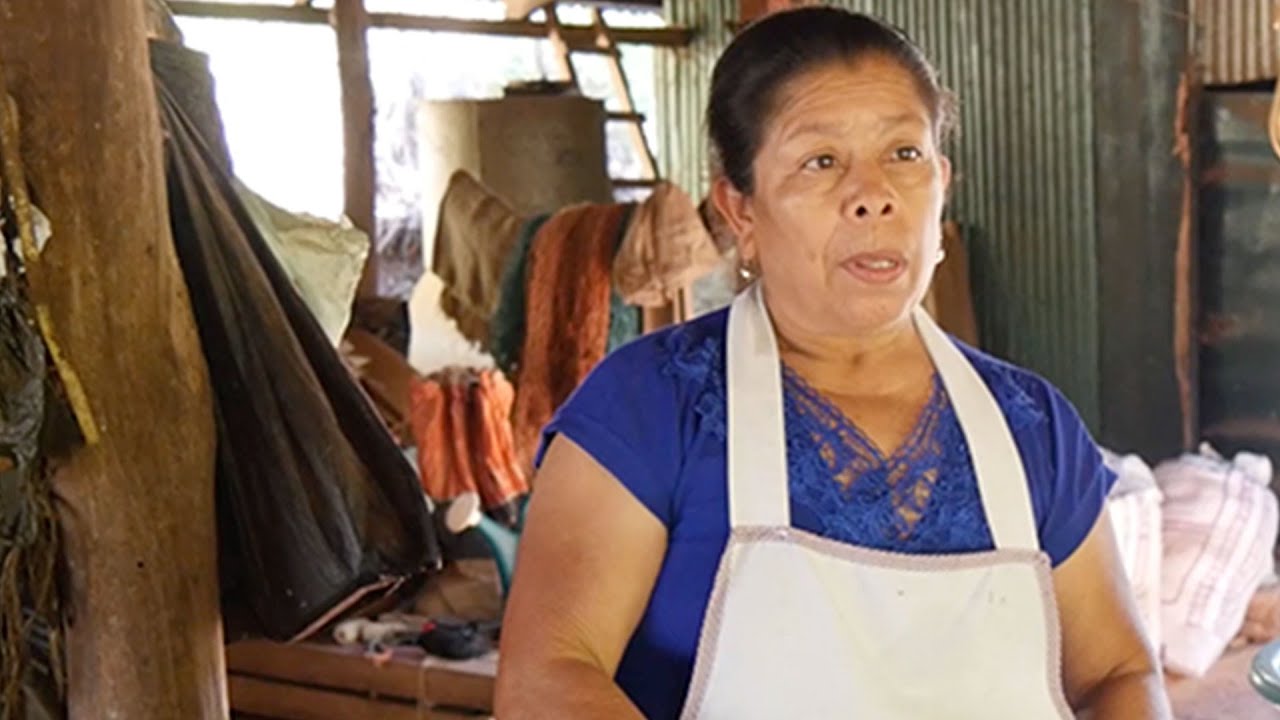
El Salvador is experiencing one of the worst water crises in Central America. According to the Joint Monitoring Programme for Water Supply, Sanitation and Hygiene (JMP), in rural areas, 100,000 Salvadorans, 5.8% of the population in 2020, still used surface water to cover their needs. More than 1.6 million had to leave their homes to fetch drinking water.
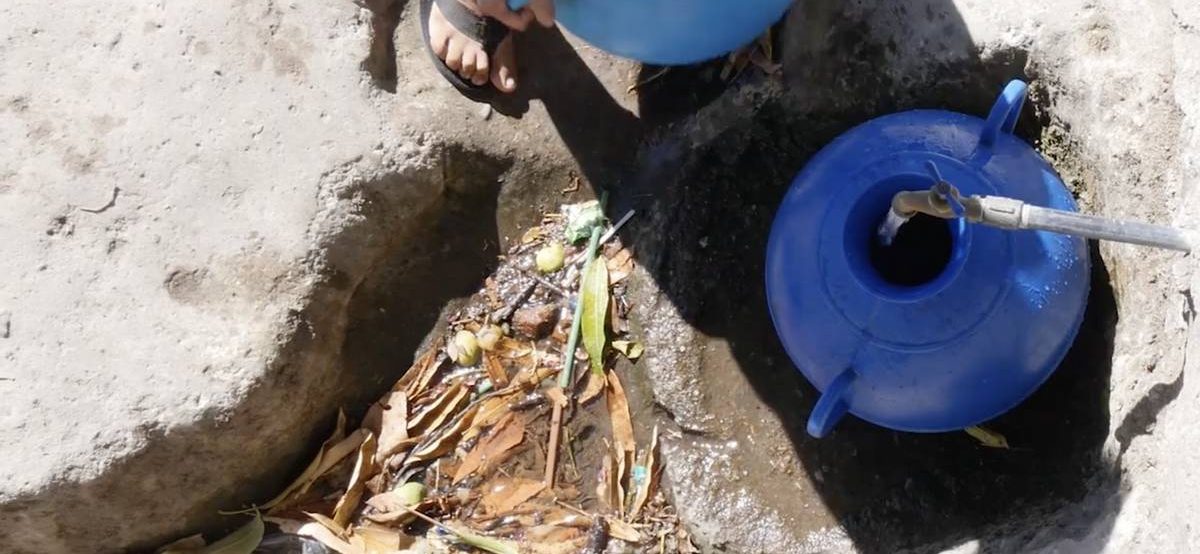
In 2020, more than 1.6 million had to leave their homes to fetch drinking water.
The Lempa River, the country’s main watercourse, is rapidly degrading. Its basin is jointly managed with Honduras and Guatemala, and the IPCC forecasts in its sixth report (AR6) indicate that the area will be affected by an increase in extreme phenomena (droughts and hurricanes) in the coming years.
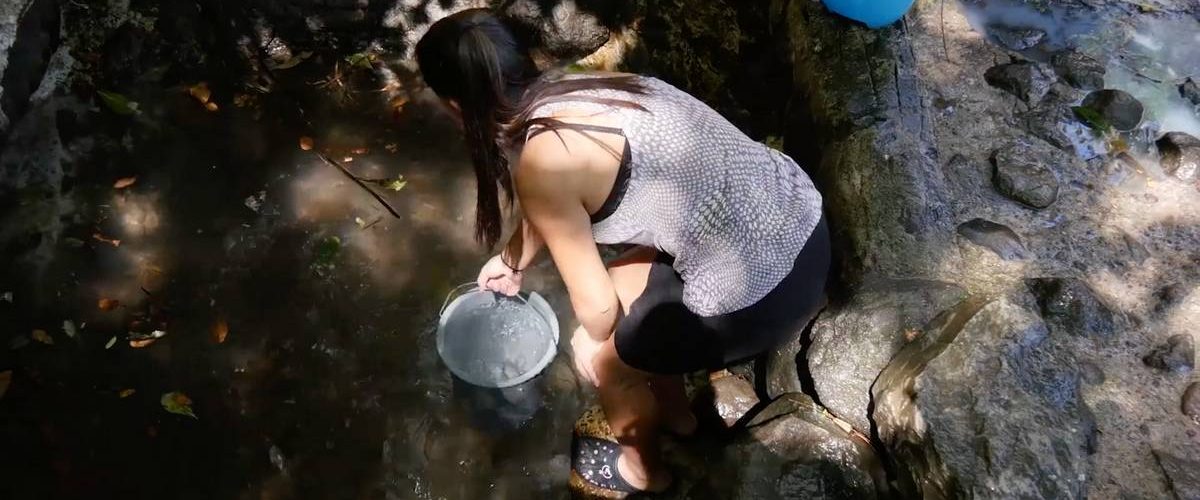
According to UN-Water, 80% of El Salvador’s territory is under water stress, and more than 60% of the available water is polluted.
Poor management of water resources
As usual, these crises are due to a combination of adverse factors, and these have recently increased in the country. In 2021, El Salvador had an estimated population of more than 6,300,000 inhabitants, with the highest population density on the entire American continent: approximately 311 inhabitants/km². Poor management, overexploitation of aquifers and river basins, pollution, and the climate crisis have been particularly harmful in the country in the last few years. According to UN-Water, 80% of El Salvador’s territory is under water stress, and more than 60% of the available water is polluted.
Unfortunately, in many areas of El Salvador, the exploitation of aquifers and river basins by multinationals —which the local farmers call “death projects”— and the lack of government response have worsened the water and sanitation crisis. This situation is endemic in many bordering, paradoxically water-rich countries, such as Guatemala, Honduras, and Nicaragua.
In the short film Private Waters, Jordan Leibel and Ramiro Laínez, finalists of the fifth edition of the We Art Water Film Festival, tell us about the project carried out by the inhabitants of the Salvadoran community El Rodeo to guarantee access to its 85 families, victims of a lack of equitable water management.
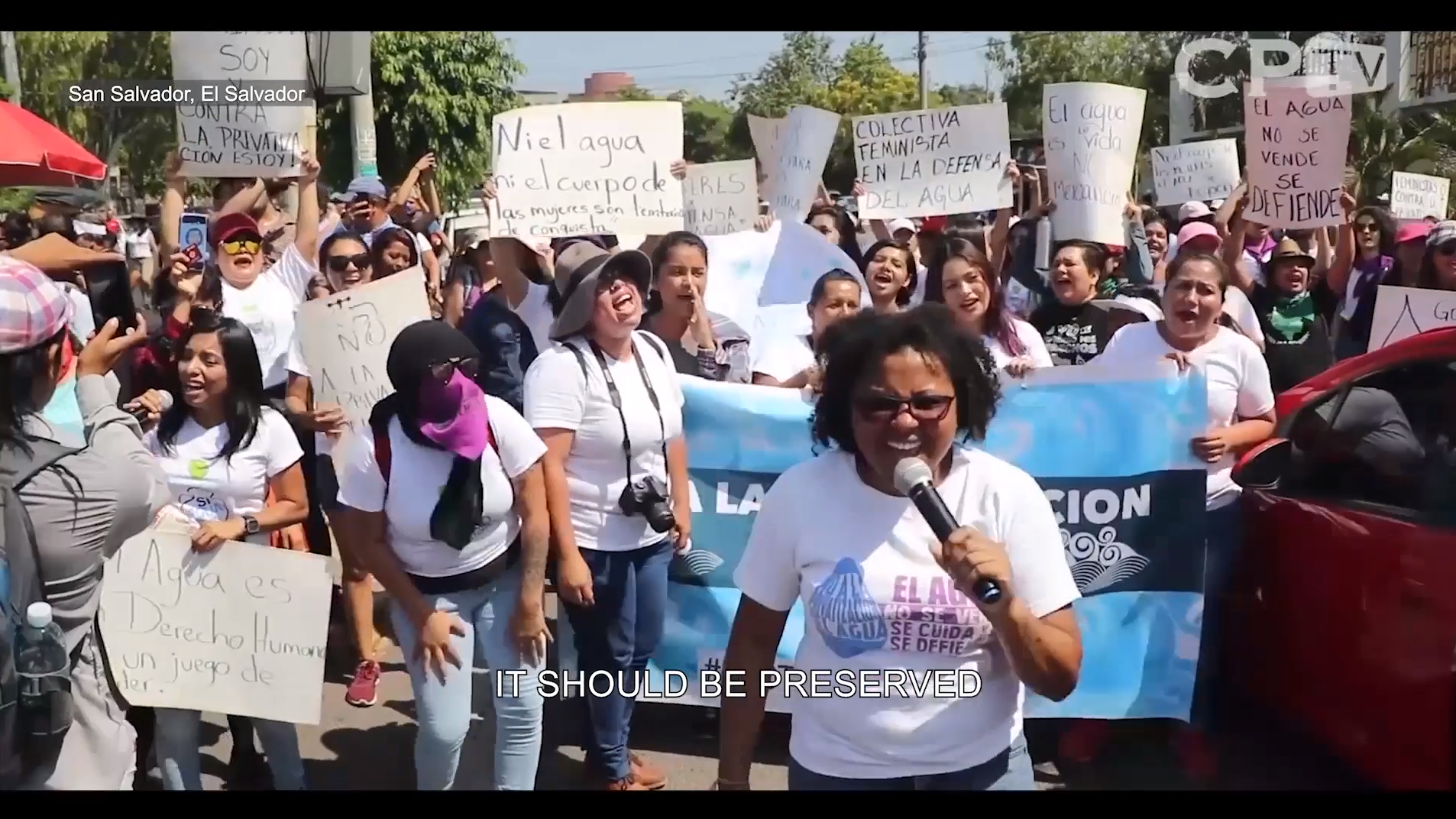
Private Waters, de Jordan Leibel y Ramiro Laínez, finalista de la quinta edición del We Art Water Film Festival.
Water and energy poverty often go hand in hand
The example of El Rodeo is inspiring for the other communities in the country and provides a valuable model in Central America. The need for water distribution is leading disadvantaged communities to work towards energy sovereignty, as the electricity that reaches their homes is costly. Creating committees that manage transport with solar-powered pumps is essential to guarantee the service.
In El Rodeo, the energy that drives the water to the distribution tank comes from 32 solar panels. In this way, families can significantly reduce the cost of obtaining 10 to 12 cubic meters of drinking water per month.
Women are the main beneficiaries of having water at home. They were in charge of carrying water in 15-liter drums on their heads, and now they will lead the management and maintenance of the installations.
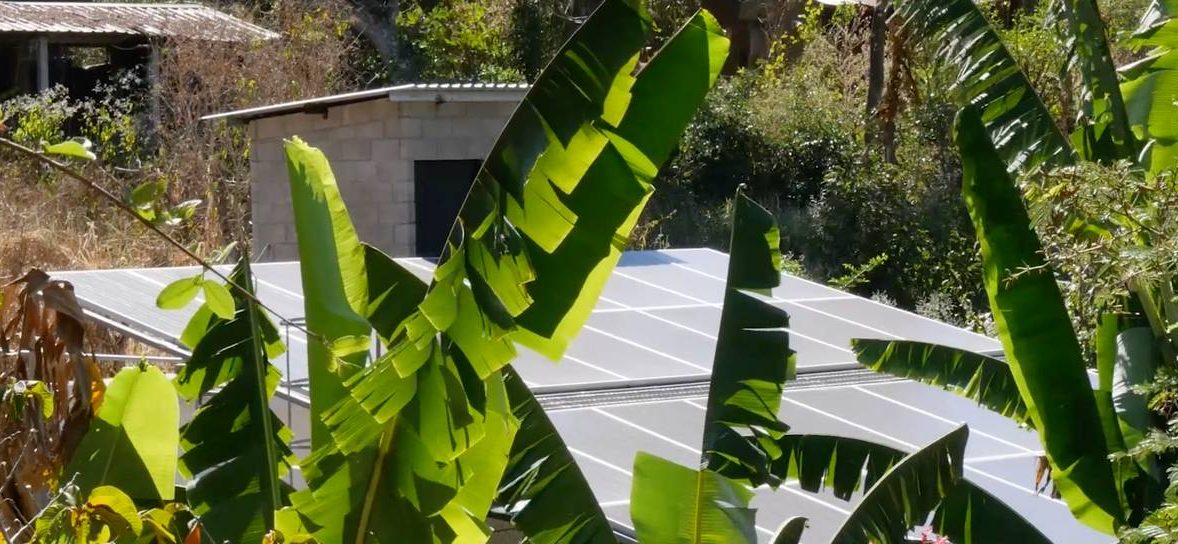
In El Rodeo, the energy that drives the water to the distribution tank comes from 32 solar panels.
SDG 17 sets the roadmap
El Salvador has a long way to go to achieve full and effective public-private collaboration to guarantee the human right of access to water. In the short film Private Waters, the recently deceased Margarita Posada, coordinator of the National Health Forum of El Salvador (FNS), explains the shortcomings of governance that do not take into account the principles governing SDG 17, which specify that companies should support and respect the protection of internationally recognized fundamental human rights within their sphere of influence and ensure that they do not violate them.
The General Water Law, driven by the Salvadoran government, passed last December, has not convinced environmental groups, regional communities, or the UN Special Rapporteur on the Human Rights to Water and Sanitation. Criticisms focus on the fact that the law prioritizes commercial water use and caters more to industrial needs or intensive agriculture, such as large-scale sugar cane production, which occurs precisely in areas where communities are poorer and more malnourished.
Efficient water management is also a human right. This requires a balance between the public and private sectors in an environment of social justice that ensures the maintenance of access to safe water and sanitation and the environmental security on which the survival and health of the world’s rural dwellers depend.
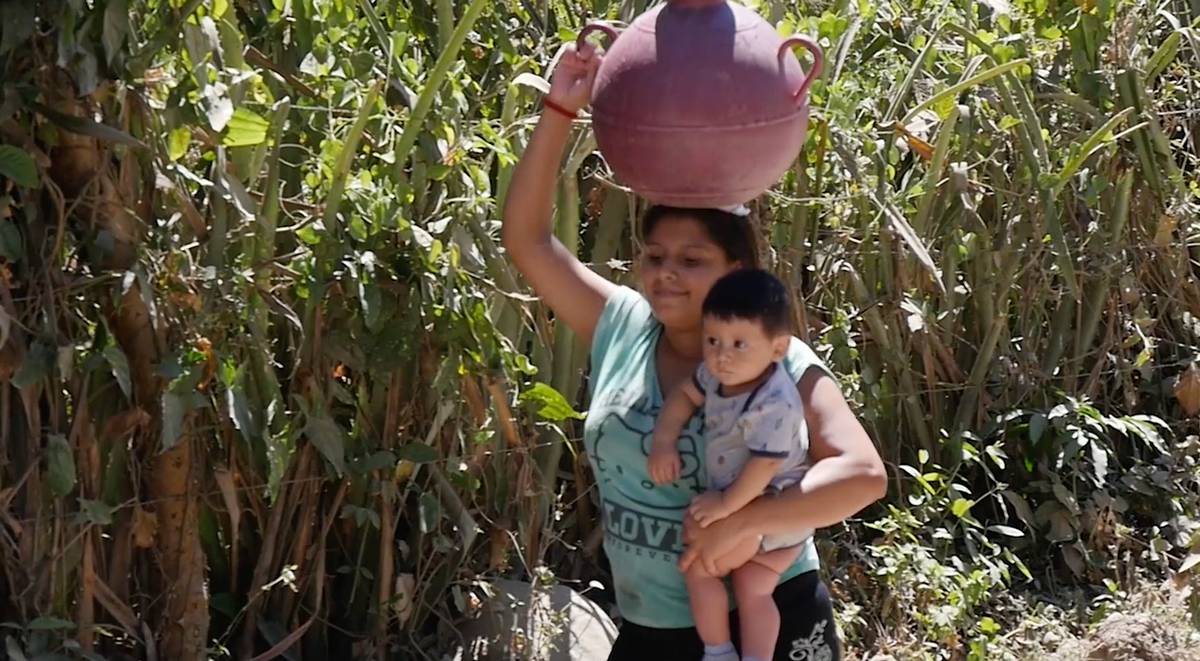
In El Rodeo, women are the main beneficiaries of having water at home. They were in charge of carrying water in 15-liter drums on their heads, and now they will lead the management and maintenance of the installations.
The value of the natural water cycle
The recovery of the natural water cycle is fundamental and enables rural communities to empower themselves through its management. Ancestral cultures, which we are forgetting and, in many cases destroying, respected initially and followed the water cycle. They did so in the way they cultivated crops, watered their livestock, drank, and washed. Recovering this way of relating to the environment is possible. It is being demonstrated in many projects, such as those carried out in Bosawas, Nicaragua, and Lake Titicaca in Bolivia and Peru. In all of them, the recovery of the natural water cycle means recovering collective memory. This element provides resilience to the community and is a very effective tool for action both to mitigate climate change and adapt to its effects. Governance must consider this, as this culture is the wealth of those most in need.


